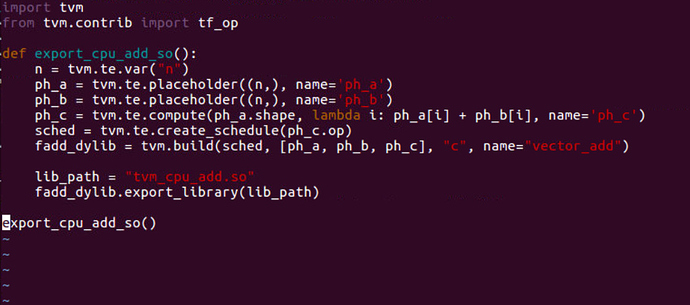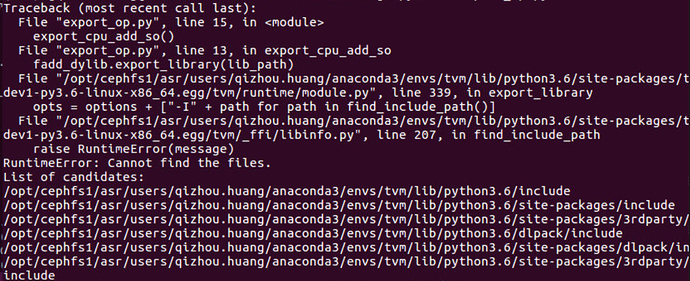Integrate TVM optimization into TensorFlow with TVMDSOOp
Introduction
In the next release of TVM(maybe 0.7), we will add the new feature called TVMDSOOp which integrates TVM optimization with TensorFlow.
TVMDSOOp is the general custom operator for TensorFlow which can run any TVM optimization on CPU or GPU. In other words, you can optimize your subgraph or implement new operators in TVM and embed them into TensorFlow graph easily. It is valuable to try TVM and replace part of the model for optimization if you still want to keep using the TensorFlow infrastructure like SavedModel or TensorFlow Serving.
How To Use
Now you can use TVMDSOOp by compiling the latest code of TVM. Notice that TVMDSOOp was not enabled by default and you may set(USE_TF_TVMDSOOP ON) in config.cmake.
Follow the documentation of TVM in https://docs.tvm.ai/install/from_source.html to compile with USE_TF_TVMDSOOP and install TVM Python package.
Now you can use pure TVM APIs to implement the computation operators. The following example will export the library of TVM add operator on CPU.
import tvm
from tvm.contrib import tf_op
def export_cpu_add_so():
n = tvm.te.var("n")
ph_a = tvm.te.placeholder((n,), name='ph_a')
ph_b = tvm.te.placeholder((n,), name='ph_b')
ph_c = tvm.te.compute(ph_a.shape, lambda i: ph_a[i] + ph_b[i], name='ph_c')
sched = tvm.te.create_schedule(ph_c.op)
fadd_dylib = tvm.build(sched, [ph_a, ph_b, ph_c], "c", name="vector_add")
lib_path = "tvm_cpu_add.so"
fadd_dylib.export_library(lib_path)
With the latest TVM Python APIs, we can load dynamic libraries easily and use them like normal TensorFlow operators.
import tensorflow as tf
from tvm.contrib import tf_op
def test_tvm_cpu_add_so():
lib_path = "tvm_cpu_add.so"
module = tf_op.OpModule(lib_path)
tvm_add = module.func("vector_add", output_shape=[4], output_dtype="float")
x = tf.constant([1.0, 2.0, 3.0, 4.0])
y = tf.constant([1.0, 3.0, 5.0, 7.0])
print(tvm_add(x, y).numpy())
In order to load the libraries of TVM including libtvm_runtime and tvm_dso_op, please install or add to LD_LIBRARY_PATH before running your script.
LD_LIBRARY_PATH=$LD_LIBRARY_PATH:/path/of/incubator-tvm/build/ ./your_script.py
Now enjoy hacking for remixing TVM runtime and TensorFlow session.
How It Works
The implementation of TVMDSOOp is straightforward and here is the overall architecture.

Since it is kind of the TensorFlow custom operator, we need to implement the computation kernel and register as TensorFlow operators. This operator support list of tensors as input arguments and setting for the shape/dtype of output tensor.
With TVM runtime APIs, we can load TVM dynamic libraries as Module and get the function which was registered by user’s TVM Python script. Even though TensorFlow passes the Tensor(tensorflow::Tensor) to kernels and TVM runtime requires DLPack for inference, TVMDSOOp will automatically convert the data of tensors for users at the lowest cost. Users only need to optimize their TVM Python scripts and use the operators in TensorFlow graph without extra integration work.
For more detail and code of the implementation, please refer to the merged pull-request in https://github.com/apache/incubator-tvm/pull/4459 .


